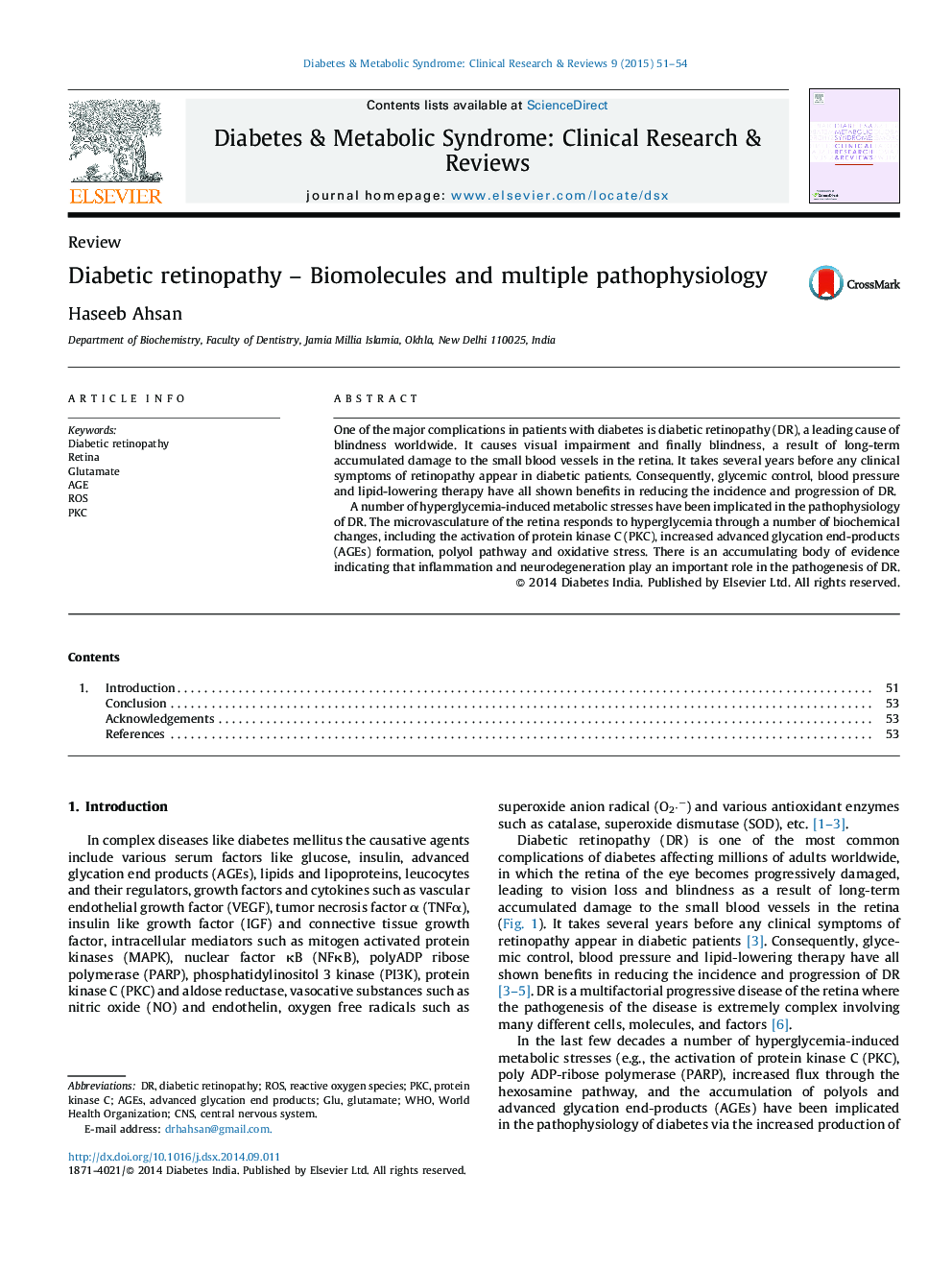| Article ID | Journal | Published Year | Pages | File Type |
|---|---|---|---|---|
| 2910151 | Diabetes & Metabolic Syndrome: Clinical Research & Reviews | 2015 | 4 Pages |
One of the major complications in patients with diabetes is diabetic retinopathy (DR), a leading cause of blindness worldwide. It causes visual impairment and finally blindness, a result of long-term accumulated damage to the small blood vessels in the retina. It takes several years before any clinical symptoms of retinopathy appear in diabetic patients. Consequently, glycemic control, blood pressure and lipid-lowering therapy have all shown benefits in reducing the incidence and progression of DR.A number of hyperglycemia-induced metabolic stresses have been implicated in the pathophysiology of DR. The microvasculature of the retina responds to hyperglycemia through a number of biochemical changes, including the activation of protein kinase C (PKC), increased advanced glycation end-products (AGEs) formation, polyol pathway and oxidative stress. There is an accumulating body of evidence indicating that inflammation and neurodegeneration play an important role in the pathogenesis of DR.
